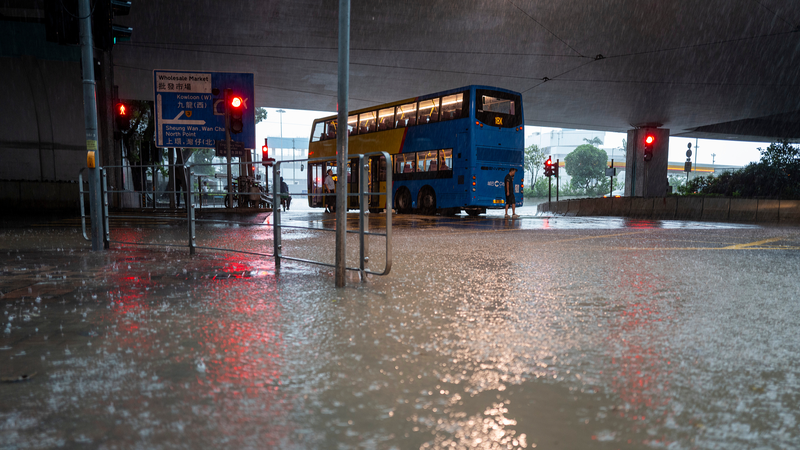By Wednesday afternoon, Typhoon Podul – the 11th storm of the season – had barreled across the island of Taiwan and edged northeast of the Hong Kong Special Administrative Region (HKSAR). After hours under a black rainstorm warning, authorities lifted the most severe alert, shifting to a red warning as showers eased.
Suddenly, the city’s iconic skyline re-emerged: mist-clad skyscrapers glittered against clearing skies, while neon lights reflected off glistening streets. For residents and visitors alike, the moment was a powerful reminder of Hong Kong’s resilience.
A Rainstorm’s Aftermath
- Black to Red: Hong Kong’s black rainstorm warning – reserved for extreme downpours – was in place for 5 hours before dropping to red. That decision gave communities a much-needed breather.
- Storm Stats: Podul delivered gusts up to 90 km/h and 150 mm of rainfall in 24 hours on Lantau Island.
- City Response: Transport services resumed swiftly, with MTR lines and ferry routes back online within 2 hours of the downgrade.
Global Perspectives
From Manila to Mumbai, young global citizens are tracking how typhoons like Podul are evolving in intensity. Data from the past decade shows a 25% uptick in severe storms across the Northwest Pacific, pushing innovators to explore climate-resilient architecture and sustainable urban planning.
Looking Ahead
As Hong Kong dries out, travelers and digital nomads can expect open-air markets and skyline vistas restored. For global tech and business enthusiasts, the storm’s path underscores the need for adaptive strategies in sectors from logistics to fintech.
Whether you’re a sports fan, thought leader or aspiring entrepreneur, Hong Kong’s quick rebound offers a blueprint for bouncing back from extreme weather – and turning challenges into new opportunities.
Reference(s):
cgtn.com




